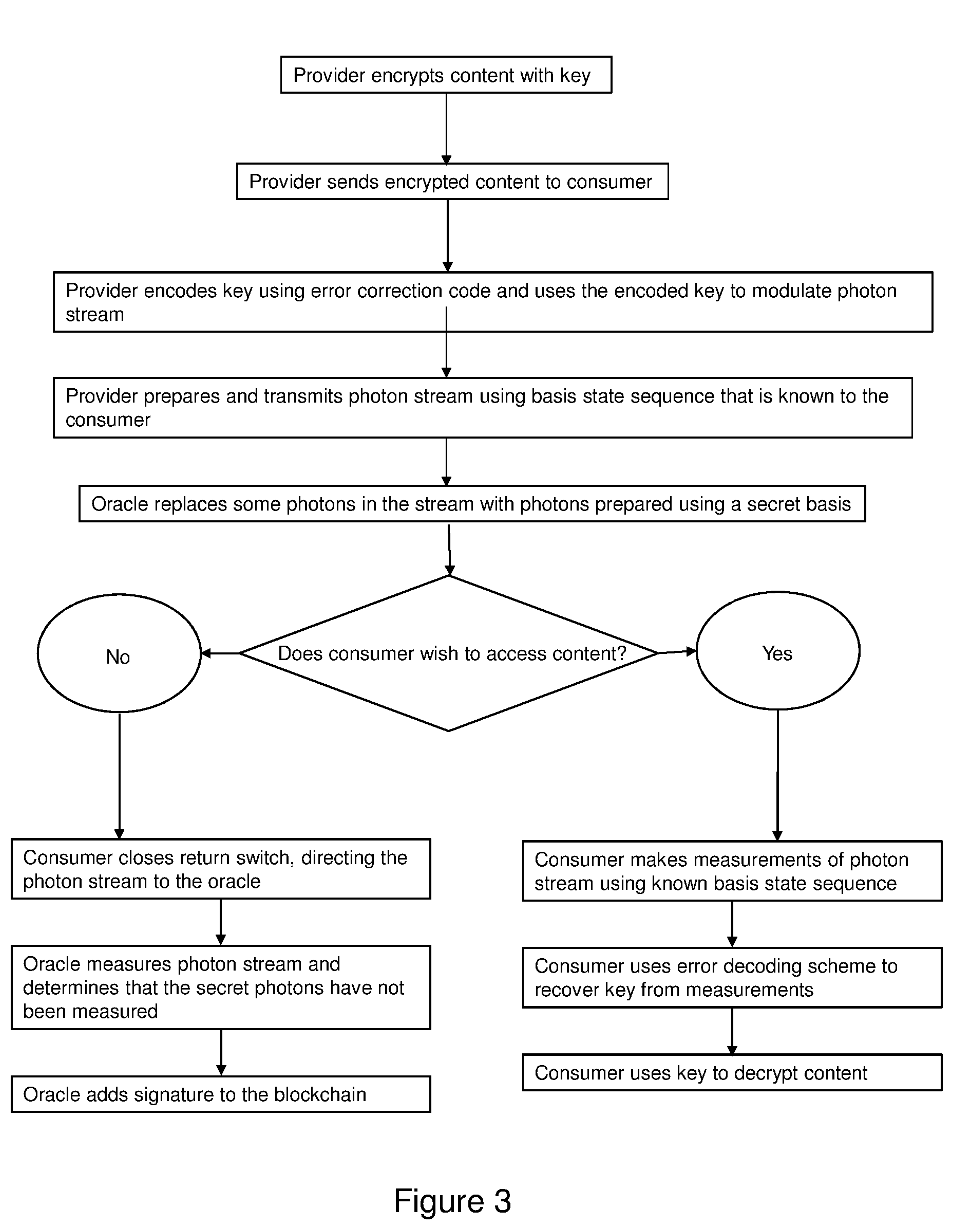Excited to have a recent patent grant on improvements to DLT with quantum techniques.

Distributed ledger (or blockchain) technology uses cryptographically signed chains of transactions to record the transfer of digital assets. In many implementations, these assets have a monetary value associated with them. There may be multiple types of assets on a blockchain, so for example a data asset may be transferred in exchange for some monetary value.
Distributed Ledger Technology enables “trustless” transactions thanks to the ability of all participants to validate transactions. However, in more complex transactions known as smart contracts, assets cannot always be adequately secured. For example, the delivery of digital assets as part of a transaction can be confirmed by the sender or the receiver, but this presents a byzantine problem, as it is difficult to prove that the receiver has received the digital assets.
Data on a blockchain is visible to all participants, though in some implementations side channels may be used to enable the exchange of information in secrecy. The participants in those side channels provide cryptographic hashes that summarise their transactions, without giving the details.
However, participants in those side channels may be misled or come to some disagreement with no facility for remediation. For example, in some situations, it is not clear whether a consumer has accessed the asset that is the subject of the transaction. It is therefore not clear whether the transaction should be added to the blockchain. The way around this is the use of third-parties providing escrow services, but that relies on trust in those third-parties. In particular, the third party asset may need to have a copy of valuable or confidential digital assets, which is not desirable.
It is desirable to overcome and/or mitigate some or all of the above-mentioned and/or other disadvantages associated with the prior art.
According to a first aspect of the invention there is provided a method of transmitting quantum-encrypted data from a quantum transmitting apparatus to a quantum receiving apparatus, the method comprising: indicating to a quantum receiving apparatus that a first sequence of mutually non-orthogonal bases will be used to prepare at least some of a plurality of bits in quantum states, at a quantum transmitting apparatus, preparing each of the plurality of bits in a respective one of a second sequence of mutually non-orthogonal bases, to give a plurality of qubits, wherein the second sequence of mutually non-orthogonal bases is different to the first sequence of mutually non-orthogonal bases.